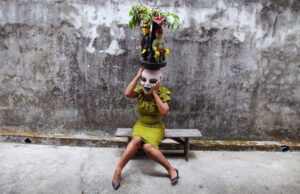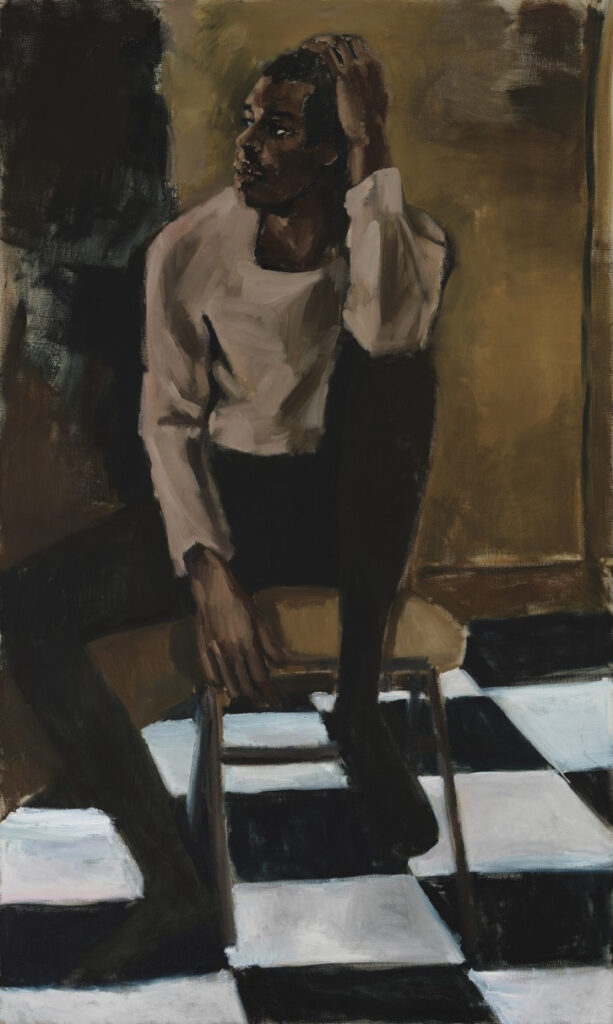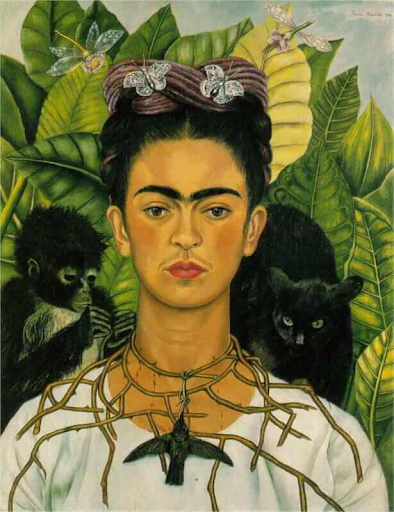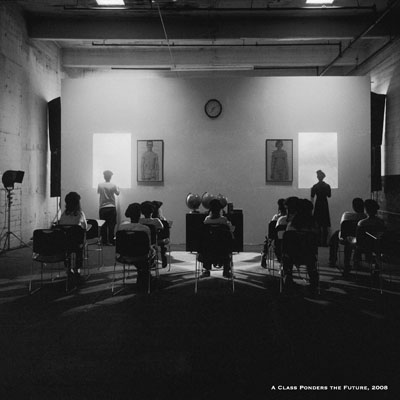
The other day I came across the documentary, Women Art Revolution (W.A.R.), in the Browsing Documentaries section of Media Services. This sparked my interest: What other films do we have that celebrate female artists? My question led me from the Browsing Documentaries and into our Teaching and Research collection, which holds a significant number of titles, both documentaries and fiction films, depicting the lives and artwork within the diverse community of female artists/feminist art. The department also has a number of streaming titles on this subject available, which can be viewed from any location by anyone with IU login credentials.
Reflecting for a moment on the emotional, political, and socio-cultural poignancy that a single painting may contain, these films explore the erasure and belittling of women’s art in a world that has traditionally elevated male works but ascribed “hobbyism” to those from female creators. While the art world has come a long way since the early-mid 20th century, these problems still persist and are reflected in the consistent devaluation of female-created art, the study of which reaches back into the 1970s era of second-wave feminism and Linda Nochlin’s revolutionary essay, “Why Have There Been No Great Women Artists?”, an illustrated breakdown of which can be found here. This 2005 New York Times article further explores disparities between men and women artists in the art market: The X Factor: Is the Art Market Rational or Biased?*

Art is one of the most profound ways human beings share their experiences. It is worth asking: what happens when the voices of male artists are valued above those of women artists, in terms of both economic value and content? What does that say to young female and male artists alike about their career options? What great art might we miss by limiting equal participation for half the world’s population and robust exchange between all artists? Photo credit: Lynette Yiadom-Boakye. Medicine at Playtime, 2017. Top 30 Black Female Painters. Kooness.com, https://www.kooness.com/posts/magazine/21-black-female-painters. Accessed 22 October 2021.
Below is a look at a few of the titles available through the Media Services department which celebrate and explore the field of feminist and women’s art: a true feast for the mind and the senses. Enjoy!
Streaming Titles
Women Artists: The Other Side of the Picture (53 mins)
Where are the works of the great women artists? Why are there so few represented in museums? In this provocative program, respected artists such as Doris McCarthy, Judy Chicago, Joyce Weiland, and Jane Ash Poitras—in combination with curators, art historians, and the Guerrilla Girls—discuss the dearth of women’s artwork in major galleries and examine the poignant social history of women in the fine arts, a story of suppression, marginalization, and omission. The film spotlights the effort of the National Museum of Women in the Arts to balance that one-sided picture of artistic achievement.


African Art and Women Artists (17 minutes)
This program focuses on the Kenyan Elizabeth Orchardson-Mazrui. Rooted deeply in African soil, her art comments on life, particularly the contradictory and often hypocritical attitudes of African society toward women; her teaching at the university champions the concept that African art is a valid academic discipline, that African art is intrinsically different in being part of life rather than (as in Western art) a separate element.
The Artist Was A Woman (53 minutes)
The history of Western art has few examples of great women artists. This documentary uncovers the works of some gifted women, while exploring why talent such as theirs was overlooked. We learn that women were denied admission to art school, or if admitted, not allowed to study the human figure. Also, male art historians did not take their work seriously, denying them the recognition they deserved. Rosa Bonheur, Mary Cassatt, and Georgia O’Keeffe bear witness to the fact that talent knows no gender. Jane Alexander reads from letters and diaries and Germaine Greer provides wry social commentary.

Latin American Women Artists 1915-1995 (27 minutes)
Surveying some of the most under-appreciated art of the 20th century, this program documents a groundbreaking exhibit of work by Latin American women at the Milwaukee Art Museum. The video opens up the world of these bold and sensitive visionaries, illuminating their accomplishments, their impact on artists outside their own countries, and the relationship between cultural and artistic identity. Featuring the work of legendary painters Frida Kahlo and Maria Izquierdo—as well as living artists Fanny Sanin, Soledad Salame, Elba Damast, and many others—the program reevaluates notions of mainstream and margin in the contemporary art world.

DVD Titles
Invisible Women: Forgotten Artists of Florence (30 minutes)
“Florence Italy, is the birthplace of some of the world’s most celebrated artists, scientists, and architects — from Michelangelo and Leonardo to Brunelleschi and Galileo. Yet little is known of the women artists who once painted there. A center for female creativity for more than five centuries, Florence hosts innumerable works by significant women painters from the Renaissance onward. Though these masterful paintings rival the art of their great male contemporaries, they are often unseen by the general public. ‘Invisible Women’ sheds light on these groundbreaking women artists and their virtually unknown works. It also points to the rediscovery and restoration of these works as the guiding forces behind rescuing the art of Florence’s forgotten women artists” (Description from DVD container.)
The Desert is no Lady: Women Artists and Writers of the Southwest (45 minutes)
Women artists and writers discuss the influences of Southwestern culture, geography, and demographics on their work, particularly focusing on the Hispanic, Native American, and Anglo cultures.
Conjure Women (85 minutes)

This documentary explores the artistry and philosophy of four African-American women: choreographer/dancer Anita Gonzalez; performance artist Robbie McCauley; photographer Carrie Mae Weems; and musician Cassandra Wilson. It includes interviews with these women and shows their works and performances and is intended to challenge assumptions about African-American culture.
W.A.R. Women Art Revolution (83 minutes)
An entertaining and revelatory “secret history” of feminist art, !Women Art Revolution deftly illuminates the under-explored movement through conversations, observations, archival footage, and works of visionary artists, historians, curators, and critics. Starting from its roots in the 1960s antiwar and civil rights protests, the film details developments in women’s art through the 1970s and explores how the pioneering artists created the most significant art movement of the late 20th century.
When you think of women artists, who comes to mind? There is a documented phenomenon of “serial forgetting” of women in creative fields, characterized by an invisibility that recurs generation after generation, even when attempts are made to document women artists, their work, and their history. If you have a favorite woman artist, or you know of other great films about women artists, let us know in the comments! SB
Sarah Bull is a student staff member in a number of departments at Wells Library, including Media Services.
*This linked article may appear behind a paywall. If you are affiliated with IU, you can set up a free account and access the content by clicking here.
2 Comments
Thanks for reading! I agree: great questions on a topic that does not get as much coverage as it deserves.
Awesome blog! Great questions!